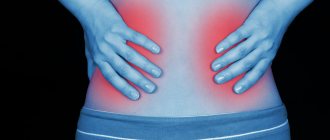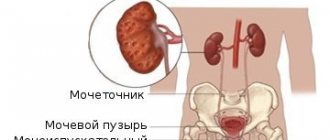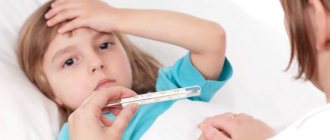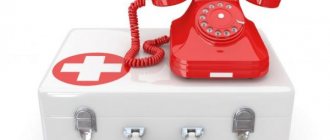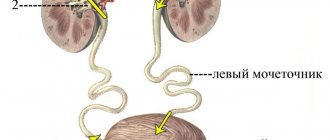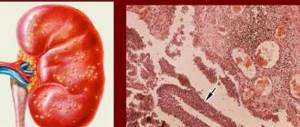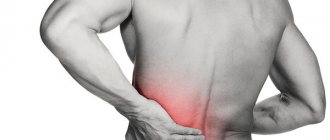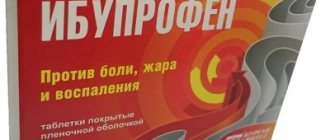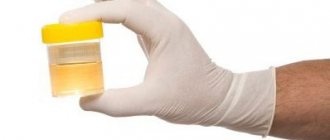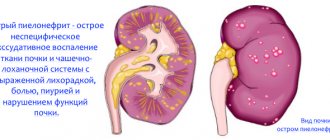Consultation with a urologist – 1600 rubles.
Pyelonephritis
- inflammatory kidney disease of predominantly bacterial etiology, characterized by damage to the renal pelvis, calyces and renal parenchyma.
The inflammatory process is initially localized in its internal part, where the pyelocaliceal structure of the kidney is located and where urine concentration occurs. In the absence of treatment, or if it is carried out inadequately, the inflammation slowly spreads to the renal cortex. At the same time, sclerosis and shrinkage of the kidney develop Source: Nekrasova A.A. Be careful - pyelonephritis! / A.A. Nekrasova // Atmosphere. Cardiology. - 2004. - No. 2. - P. 40-41. .
The disease can occur in acute
or
chronic
form. Among patients of all ages, the majority are women, the ratio between them and men ranges from 1:3 to 1:30. Among men, the incidence of pyelonephritis increases after 40 years of age, which in most cases is associated with the development of benign prostatic hyperplasia Source: Rumyantsev A.Sh. Etiology and pathogenesis of pyelonephritis / A.Sh. Rumyantsev, N.S. Goncharova // Nephrology. - 2000. - T. 4. - No. 3. - P. 40-52. .
What becomes the root cause of the disease?
Currently, pyelonephritis is considered to be an exclusively ascending urinogenic infection, in which bacteria from the bladder enter the renal parenchyma Source: Bergeron MG Treatment of pyelonephritis in adults / MG Bergeron // Med. Clin. North Amer. Antimicrobial Therapy. - 1995. - Vol. 79. - No. 3. - P. 619-649. .
Among the pathogens, gram-negative flora predominates, which is sown on average in 80% of cases. In general, among the causative agents of pyelonephritis, E. coli is the leader, which is found in approximately 80% of patients. In second place, according to various authors, is Proteus mirabilis - 14-16%, Enterecocci - 21%, Klebsiella pneumoniae - 12-15% Source: Rumyantsev A.Sh. Etiology and pathogenesis of pyelonephritis / A.Sh. Rumyantsev, N.S. Goncharova // Nephrology. - 2000. - T. 4. - No. 3. - P. 40-52. .
Urinary tract infections caused by Candida are mainly observed in patients with diabetes mellitus, seriously ill patients receiving long-term broad-spectrum antibiotics, when treated with corticosteroids, immunosuppressants, cytostatics and any other patients with immunodeficiency of other origins and a long-standing catheter.
Viral pyelonephritis occurs mainly in children during an epidemic of group A influenza. At the beginning of the disease, it is characterized by an abacterial course, but after 4-5 days opportunistic flora joins Source: Rumyantsev A.Sh. Etiology and pathogenesis of pyelonephritis / A.Sh. Rumyantsev, N.S. Goncharova // Nephrology. - 2000. - T. 4. - No. 3. - P. 40-52. .
The reservoir of uropathogenic bacteria is the rectum, perineum and urethra. In addition, in men the source of pathogenic E.coli is the prostate gland, and in women it is the vagina Source: Rumyantsev A.Sh. Etiology and pathogenesis of pyelonephritis / A.Sh. Rumyantsev, N.S. Goncharova // Nephrology. - 2000. - T. 4. - No. 3. - P. 40-52. .
The most important factors predisposing to the penetration of uropathogenic bacteria into the urethra and bladder include:
- Anatomical features of the female urinary tract: short, wide urethra and proximity to the anorectal zone.
- Intense sexual activity, which can cause tissue irritation and increase susceptibility to infection, as well as increase the mechanical transfer of bacteria from the anal-vaginal area to the urethra.
- Use of a diaphragm and spermicides for contraceptive purposes, which contribute to the colonization of the vagina by E. coli.
- Delayed postcoital voiding.
- Homosexual contacts.
- Menopause period.
- Irregular toileting of the male genital organs.
- Insufficiency of local immunity.
- Any anatomical or functional disorders leading to disruption of urine outflow, as well as instrumental manipulations.
Contraindications for use
The product is contraindicated for children under 5 years of age. The use of Monural is not recommended for those people who have congenital kidney pathology.
Persons who have an individual intolerance to some components of the drug should be careful when using it. To find out, you need to consult a doctor who will write out a number of directions for tests, the results of which will show the body’s reaction to a particular component.
If you are allergic to some of the components of Monural, then a reddish and itchy rash may appear on your skin. Often an allergic reaction manifests itself in the form of inflammation of the mucous membranes of the eyes.
Symptoms of pyelonephritis
As the disease progresses, the symptoms of pyelonephritis are quite vivid. This may be an elevated temperature, swelling of the face, general malaise of the body, pain, discomfort in the lower back, and trembling may begin. Nausea and vomiting may also occur.
Not everyone, however, approximately every third patient experiences problems with urination, experiences pain during this process, and also upon visual analysis, the urine has an unnatural color, perhaps even blood.
However, it is also worth noting that such symptoms may not be caused by kidney inflammation, and self-medication in such cases is simply contraindicated. It is necessary to contact professional doctors.
How Monural works
The main active ingredient of this drug is fosfomycin trometamol. This component was derived from phosphonic acid, which is also often used to eliminate kidney diseases. It is this component that is key in the antibiotic. Monural also contains saccharin for a more acceptable taste and various flavorings that make the treatment process more pleasant. It is thanks to these components that patients do not experience a gag reflex.
The manufacturer also produces the medicine in powder form. Experts say that this form acts much faster on the source of the disease and eliminates pyelonephritis in a matter of days.
Treatment of infection
Treatment of pyelonephritis should be comprehensive and include, in addition to medication, diet. In case of kidney disease of this kind, it is necessary to eat low-fat foods, avoid fried, spicy, and excessively salty foods. It is also prohibited to consume any foods that are bright red in color.
When treating kidneys, antibiotics are mainly prescribed, and the patient must undergo a full course of treatment in order to completely destroy the bacteria inside his body. Painkillers are also prescribed for severe pain.
However, unfortunately, such a disease can return and become chronic . Therefore, it is necessary to undergo regular diagnostics to identify this disease. “SM-Clinic” makes it possible to start treatment in a timely manner under the supervision of experienced specialists.
Sources:
- Bergeron MG Treatment of pyelonephritis in adults / MG Bergeron // Med. Clin. North Amer. Antimicrobial Therapy. - 1995. - Vol. 79. - No. 3. - P. 619-649.
- Nekrasova A.A. Be careful - pyelonephritis! / A.A. Nekrasova // Atmosphere. Cardiology. - 2004. - No. 2. - P. 40-41.
- Rumyantsev A.Sh. Etiology and pathogenesis of pyelonephritis / A.Sh. Rumyantsev, N.S. Goncharova // Nephrology. - 2000. - T. 4. - No. 3. - P. 40-52.
- Styazhkina S.N. Structure of incidence of pyelonephritis / S.N. Styazhkina [and others] // Problems of modern science and education. — 2016.
Traditional methods of dealing with kidney cysts
March 7, 2020 Vrach
A fluid-filled cavity in the kidney is called a cyst. It may have an oval or round shape. As a rule, they form on only one kidney, but in rare cases, bilateral organ damage is observed. To eliminate formations at an early stage, it is sufficient to use conservative measures, which include not only traditional but also alternative medicine. As practice shows, with this diagnosis, treatment with folk remedies gives good results, so even doctors recommend these methods.
Benefits of traditional medicine
If a cystic neoplasm is detected on the kidney, the patient is registered in order to constantly monitor the dynamics of the development of the disease. He is prescribed general strengthening therapy aimed at improving immunity. If severe symptoms occur, such as pain or fever, additional painkillers and anti-inflammatory drugs are prescribed. In other cases, it will be enough to resort to alternative medicine.
Many folk remedies for kidney cysts that are known today were used decades ago, when medicine was not so developed, and people were mostly treated with herbs. Such techniques have a number of advantages, which explains their popularity:
- gentle effect on the body;
- no side effects;
- positive effect on the entire body;
- elimination of symptoms;
- reduction or complete elimination of formations.
It is important to understand that treatment with folk remedies gives good results only in the early stages of the appearance of a tumor.
But you shouldn’t hope that positive dynamics will come quickly, because unlike drug treatment, the course of taking traditional medicines is longer. If the disease is advanced, then such methods will only have a general strengthening effect on the body, but the formed formation can continue its development. In addition, you should consult your doctor before using alternative methods, as... The causes and treatment of kidney cysts are directly dependent on each other.
Treatment with medicinal herbs
Nature is rich in healing herbs, many of which can completely replace medications. Decoctions and tinctures are prepared from them for internal use. To effectively cure kidney cysts, it is important to know not only which plant should be used, but also the proportions of all the ingredients needed to prepare the medicine. Today, most herbs can be purchased at the pharmacy, but some need to be collected yourself.
There are many recipes for preparing healing tinctures and decoctions, but the most effective for treating cysts are the following:
- Golden mustache. This plant is used to prepare a tincture, which is drunk in the morning on an empty stomach and in the evening half an hour before the last meal. To prepare the medicine, you need to pour 0.5 liters of vodka into 50 golden mustache joints, put them in a dark, cool place for 10 days, and then strain. Reception begins with 10 drops of tincture, diluted in 30 ml of water. Each subsequent day, the dose is increased by one drop, bringing it to 35, after which the concentration of the drug is reduced in the reverse order. Since treatment with folk remedies for a cyst on the right or left kidney has a mild effect, taking the golden mustache tincture should be 5 courses.
- Burdock leaves. For treatment, juice or gruel from burdock is used. The cut leaves of a young plant must be thoroughly washed and then crushed using a blender or mass grinder. The resulting gruel should be taken before meals, 1 tbsp. 3 times a day. If it was decided to use burdock juice for a kidney cyst, then the pulp should be squeezed out and taken 1 tbsp before meals. 2 times a day. The course of treatment lasts 2 months.
- Celandine. To prepare the medicine, you need to grind the herb using a meat grinder, and then squeeze the juice out of the resulting pulp through cheesecloth. Treatment begins with one drop of juice, which is diluted in 1 tsp. water, and increase the dose by one drop daily for 10 days. Then you need to take a 10-day break, and over the next 10 days start taking celandine juice 3 times a day, 1 hour before meals, 1 tsp, diluting it with five tablespoons of water. This is followed by a break again, after which the treatment course is repeated.
- Elecampane. If a kidney cyst is detected in men, treatment with folk remedies, such as elecampane tincture, will not only eliminate it, but also improve potency. To prepare the tincture, mix 1 tbsp. yeast with 30 g of crushed elecampane roots, pour three liters of boiled water, and leave for 2 days. Take the medicine 50 ml 3-4 times a day after meals. When the tincture is finished, take a break for 3 weeks, and then repeat the course.
- Oats. Oat decoction promotes deep cleansing of the kidneys, so it effectively eliminates them and prevents the appearance of new formations. It is prepared from 2 tbsp. cereal and 6 tbsp. boiling water The mixture is boiled by half and then filtered. For 10 days, the decoction is taken 2 times a day, 50 ml.
Nutrition for kidney cysts
Despite the effectiveness of alternative medicine methods, they are recommended to be used in conjunction with medications prescribed by a doctor. It is important to note that you can take only one medicine based on medicinal plants at a time, and in no case combine it with others. To find out which one will be optimal in a particular case, it is recommended to consult a doctor. First of all, you need to pay attention to the nature of the manifestations of the disease. It is also important to take into account the causes of the disease in order to avoid relapse in the future.
In addition to taking medications and folk remedies, it is important to follow a special diet that improves the functioning of the urinary system, suppresses the manifestation of symptoms and promotes a speedy recovery. The basic principles of nutrition for cystic formations are as follows:
- refusal of salt or its maximum limitation;
- consumption of a small amount of water if there is swelling and fluid stagnation in the body;
- ban on spicy, fried and spicy foods;
- limiting or restricting foods containing protein.
As a rule, reviews of treatment with folk remedies are positive. Patients note that the combined use of medicinal herbs and medications, as well as following a diet, gives good results. Thus, it is possible to get rid of cystic formation without the use of aggressive therapeutic measures and surgery.
